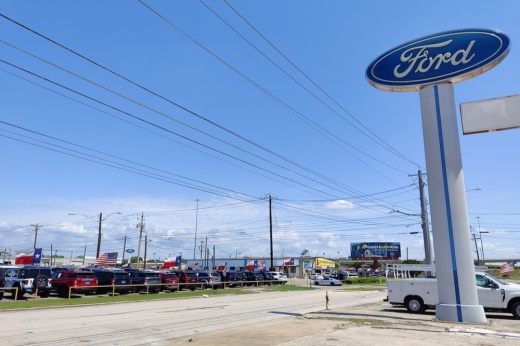The overview
Several properties off Airport Boulevard and East Koenig Lane are now zoned under Austin's DB90 development program. The changes cover more than 13 acres, including the Leif Johnson Ford dealership and adjacent parcels.
DB90, created last year to replace a similar program that was voided in court, allows taller residential buildings with affordable housing and street-level commercial space. City leaders have already signed off on dozens of DB90 cases with potential plans for thousands of new housing units and hundreds of affordable spaces citywide.
The North Loop redevelopment is expected to begin with the northernmost property where the car dealership is now situated. Developer United Properties could also end up seeking even greater building entitlements for the southern tracts before starting construction there.
In addition to the multiple sites zoned DB90 on April 10 and May 8, United Properties also plans to secure the same zoning change for the adjacent 1-acre Priester-Mell & Nicholson Inc. store at 601 E. 56th St.
The details
United Properties isn't sharing more information about its North Loop redevelopment plans for now. However, future construction could bring just over 2,250 new residences, 11 live-work units and ground-floor retail across the sites off Airport and Koenig, according to city documents.
Following discussions between the development team, North Loop neighborhood groups and council member Chito Vela's office, other local upgrades could include:
- A new pedestrian crossing over the Red Line rail at 55th Street and a shaded Capital Metro bus stop on Airport
- Townhome development on property next to the Red Line Parkway trail
- A new retention pond and shared-use trail near the northern property
- Public spaces like a plaza, playground and dog park, with design input from area residents
- A grocery store
- Construction under Green Building standards and use of renewable energy available through Austin Energy
"We have watched other parts of our city grow rapidly with new residential buildings that dilute the character of their neighborhoods rather than enrich them. Rather than fight against a project we feared might happen, we elected instead to lean in and request a seat at the table for a project that could happen," Bedrosian wrote in a May letter to city officials.





